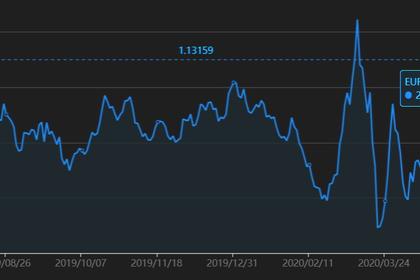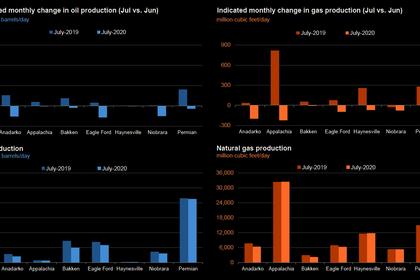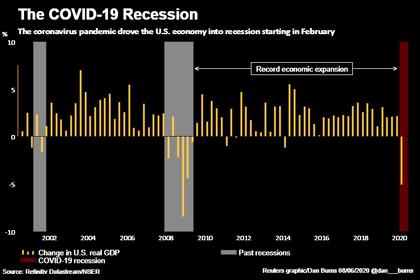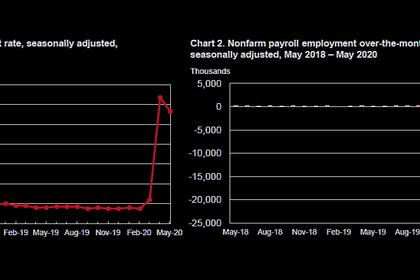
U.S. INDUSTRIAL PRODUCTION UPDOWN
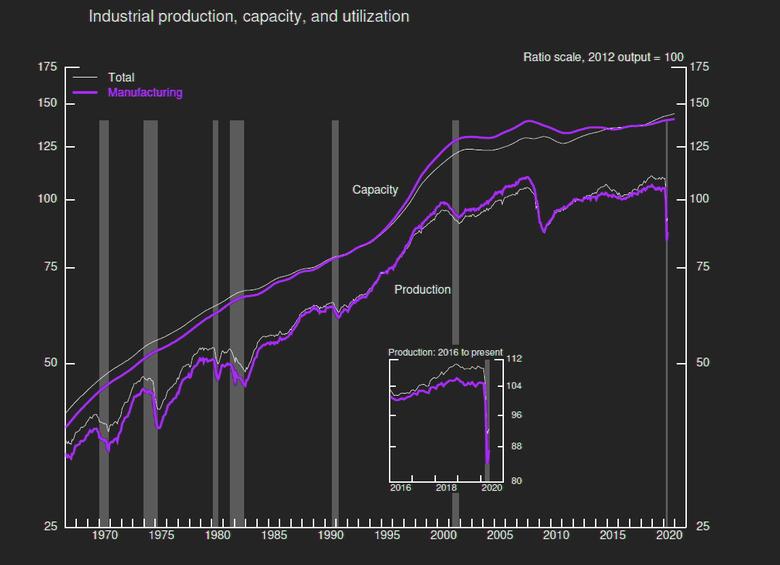
U.S. FRB - June 16, 2020 - Total industrial production increased 1.4 percent in May, as many factories resumed at least partial operations following suspensions related to COVID-19. Even so, total industrial production in May was 15.4 percent below its pre-pandemic level in February. Manufacturing output—which fell sharply in March and April—rose 3.8 percent in May; most major industries posted increases, with the largest gain registered by motor vehicles and parts. The indexes for mining and utilities declined 6.8 percent and 2.3 percent, respectively. At 92.6 percent of its 2012 average, the level of total industrial production was 15.3 percent lower in May than it was a year earlier. Capacity utilization for the industrial sector increased 0.8 percentage point to 64.8 percent in May, a rate that is 15.0 percentage points below its long-run (1972–2019) average and 1.9 percentage points below its trough during the Great Recession.
Market Groups
The major market groups posted broad-based gains in their production indexes in May, but each remained well below its pre-pandemic level. The index for consumer goods rose 3.9 percent, led by a significant rebound for automotive products. The production of business equipment rose 5.8 percent and was boosted by a substantial increase in transit equipment as most factories producing motor vehicles and civilian aircraft reopened. The indexes for defense and space equipment, construction supplies, and business supplies also recorded gains. The output of materials decreased 0.8 percent, as the production of energy materials was held down by declines related to oil extraction that more than offset increases in the indexes for durable and nondurable materials.
Industry Groups
Manufacturing output rose 3.8 percent in May, but it was still 16.9 percent below its pre-pandemic level in February. The index for durable manufacturing increased 5.8 percent in May; the most sizable gain among its components was for motor vehicles and parts, where output rose substantially but also remained more than 60 percent below its February level. Durable goods industries that recorded production increases between 8 percent and 10 percent include nonmetallic mineral products, aerospace and miscellaneous transportation equipment, and furniture and related products. The index for nondurables rose 2.1 percent, with advances of around 10 percent or more for textile and product mills, for apparel and leather, for printing and support, and for plastics and rubber products. The output of other manufacturing (publishing and logging) moved up 2.5 percent.
The output of utilities fell 2.3 percent in May, as both gas and electric utilities posted losses. Mining output dropped 6.8 percent, with declines in nearly all categories. After falling nearly 28 percent in April, the index for oil and gas well drilling declined almost 37 percent further in May and was more than 63 percent below its year-earlier level. In addition, the index for crude oil extraction has fallen about 5 percent in each of the past two months.
Capacity utilization for manufacturing in May was 62.2 percent, 2.2 percentage points higher than in April but 1.5 percentage points below its recession trough of June 2009. The operating rate for durable manufacturing increased 3.1 percentage points in May to 57.1 percent but remained below its 2009 low. Capacity utilization for nondurables rose 1.4 percentage points to 68.5 percent, slightly below its 2009 low.
-----
Earlier:
